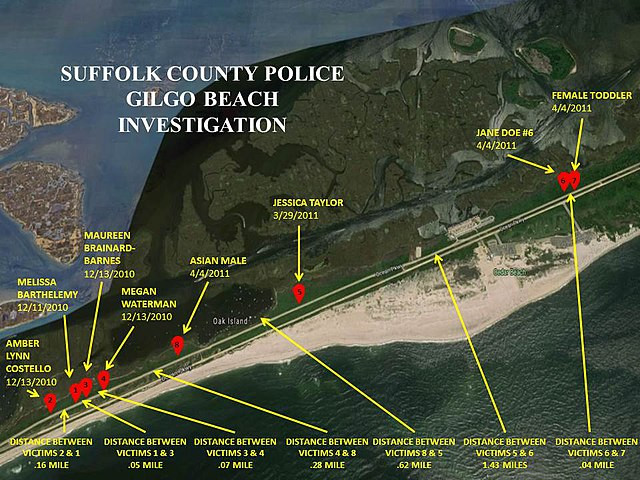Rex Heuermann, a former New York architect, has been charged with the murders of two more women, expanding the scope of a case that has haunted Long Island for over a decade. The latest charges bring the total number of alleged victims connected to Heuermann to at least six, further implicating him in one of New York's most notorious serial killer investigations.
Heuermann, 60, appeared in a New York courthouse on Thursday to face new charges of second-degree murder in the deaths of Jessica Taylor and Sandra Costilla. According to court documents, Taylor was killed in July 2003, and Costilla in November 1993. The investigation revealed a document on Heuermann's computer believed to be a "planning document," detailing his meticulous approach to committing these heinous acts, including sections on supplies, prep work, dump sites, and targets.
Taylor's mutilated body was discovered in Manorville, Suffolk County, with additional remains found near Gilgo Beach in 2011. Costilla's remains were found in a wooded area of Southampton in 1993. These findings suggest that Heuermann's alleged killing spree may have started much earlier than previously believed.
The Gilgo Beach murders, which baffled authorities for more than a decade, have seen renewed scrutiny since Heuermann's arrest last year. He was initially charged with the murders of Melissa Barthelemy, Megan Waterman, and Amber Lynn Costello. Later, prosecutors added charges for the murder of Maureen Brainard-Barnes. Collectively known as the Gilgo Four, these women's remains were discovered in close proximity along Ocean Parkway, uncovered during a search prompted by the disappearance of Shannan Gilbert in 2010.
The investigation into Heuermann's activities has intensified, with authorities uncovering more evidence linking him to additional murders. A task force comprising state and local investigators used a combination of eyewitness accounts, records from burner phones, crime scene DNA, and even a discarded pizza crust to build their case against Heuermann.
In recent months, K-9 units and police searches in Manorville and other areas have yielded further clues. Additional remains of dismembered victims Jessica Taylor and Valerie Mack were found near the Gilgo Beach crime scenes, reinforcing the theory of a broader killing spree.
In court, Heuermann was ordered to remain in custody without bail. His next court appearance is scheduled for July 30. Despite his not guilty plea, the mounting evidence continues to paint a grim picture of a calculated serial killer.
The Gilgo Beach case has drawn national attention not only for the gruesome nature of the crimes but also for the lengthy period during which the murders remained unsolved. The arrest of Heuermann, however, has reignited hope for justice among the victims' families and the broader community. The case also highlights the challenges faced by law enforcement in tracking down serial offenders who operate with such meticulous precision.
If Heuermann is indeed responsible for these additional murders, it could imply that his criminal activities span several decades, potentially involving more victims than currently known. This raises questions about other unsolved cases in the region and the possibility of further charges in the future.
The Gilgo Beach case has had a profound impact on the local community, prompting calls for improved safety measures and more effective investigative techniques. The use of modern forensic tools and collaborative efforts among various law enforcement agencies has been crucial in bringing new developments to light.






